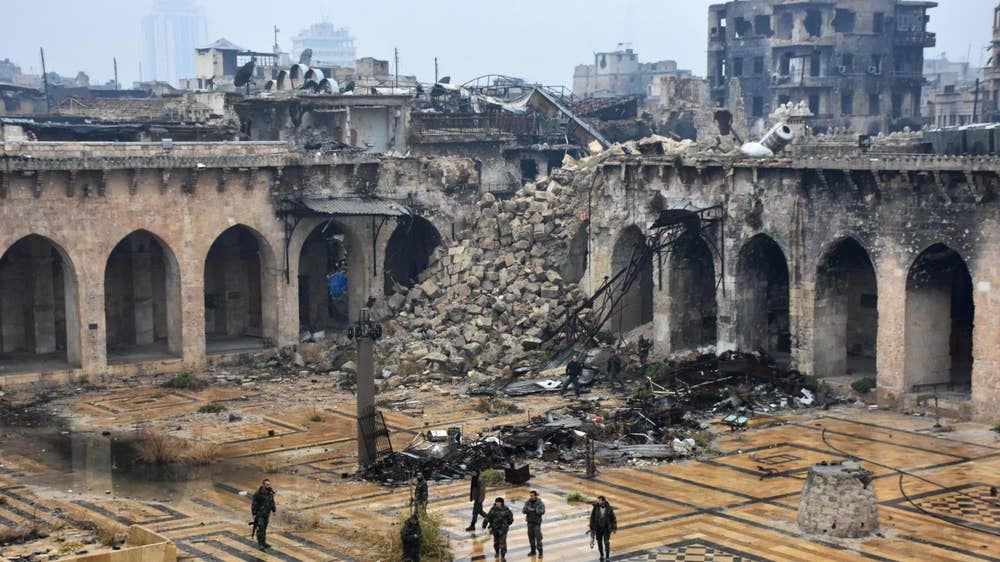The United Nations Educational, Scientific and Cultural Organization (UNESCO) defines cultural heritage in Article 1 of the World Heritage Convention as (1) monuments, including architectural works, monumental sculptures and paintings, archaeological structures, inscriptions, and cave dwellings, (2) groups of separate or connected buildings with special architecture, homogeneity, or placement in the landscape, or (3) sites that feature the works of man or the combined works of nature and man, such as archaeological sites, which have outstanding universal value for history, art, science, ethnology, or anthropology. According to the United Nations’ (UN) Universal Declaration of Human Rights, human rights include the right to life and liberty, freedom from slavery and torture, freedom of opinion and expression, education, and many others. These rights are inherent to all human beings, regardless of race, sex, nationality, ethnicity, language, religion, or any other statuses. As a man-made means of expressing religious, cultural, or historical values, cultural heritage is thus inherently a human rights issue.
What to Know
|
Problems ProtectingInternational cultural heritage law has established legal connections between a group’s cultural property and human rights. Therefore, international law has increasingly understood the destruction of cultural property as a violation of human rights. However, in recent years, international courts and organizations have debated the right to destroy cultural property that memorializes values that violate human rights. In the United States, many Americans have begun to demand that memorials and statues of Christopher Columbus, Confederate leaders, and all other slaveholders should be removed because they symbolize values condemned by the thirteenth, fourteenth, and fifteenth amendments. Similarly, British citizens have also called for the removal of statues of colonizers and slave traders that celebrate colonial conquest and oppression throughout the United Kingdom. While cultural property law, as an arm of human rights law, necessitates the preservation of cultural heritage to protect a group’s human rights, it has come to also recognize the need to remove or destroy that cultural property that symbolizes the denial of a group’s human rights. Indigenous peoples have largely contributed to the creation of cultural heritage sites around the world, but historical and ongoing economic and political processes impact the preservation of these sites. Numerous countries have introduced new laws that exploit indigenous lands that hold many natural sites and cultural heritage structures for extractive activities, including mining, petroleum extraction, and logging. As colonized peoples, indigenous communities struggle to preserve their cultural heritage in the wake of immense oppression, attempting to reconstruct their traditional knowledge and languages. Thus, indigenous peoples’ human rights are inherently tied up in the preservation of their cultural heritage and land. Capitalists tend to invest in economic projects that invade indigenous land and threaten the local environment and cultural heritage sites. For example, Native Americans protested the installation of the Dakota Access Pipeline, a 1,172 mile-long pipe that would carry oil through the Standing Rock Indian Reservation. Controlling LawUnited Nations’ (UN) Universal Declaration of Human Rights (December 10, 1948) Hague Convention for the Protection of Cultural Property in the Event of Armed Conflict (1954) Mataatua Declaration on Cultural and Intellectual Property Rights of Indigenous Peoples (1993)
Rome Statute of the International Criminal Court (ICC), Preamble and Article 8, 2, e, iv (1998) United Nations Declaration on the Rights of Indigenous Peoples, Article 31 (UDRIP) (2007) Overseeing OrganizationsInternational Criminal Court (ICC) Further ReadingAlessandro Chechi, Evaluating the establishment of an international cultural heritage court, 18 Art Ant. & L. 31 (April 2013). Alexandra Xanthaki, ed., Sanna Valkonen, ed., Leena Heinämäki, ed., & Piia Nuorgam, ed., Indigenous Peoples’ Cultural Heritage: Rights, Debates, Challenges (2017). E. Perot Bissell V, Monuments to the Confederacy and the Right to Destroy in Cultural-Property Law, 128 Yale L. J. 1130 (Feb. 2019). Evelien Campfens, Whose cultural heritage? Crimean treasures at the crossroads of politics, law and ethics, 22 Art Antiquity & L. 193 (Oct. 2017). Expert Mechanism on the Rights of Indigenous Peoples, Promotion and protection of the rights of Indigenous peoples with respect to their cultural heritage (2015). Helaine Silverman, ed. & D. Fairchild Ruggles, ed., Cultural Heritage and Human Rights (2007). Jelena Porsanger & Pirjo Kristiina Virtanen, Introduction—a holistic approach to Indigenous peoples’ rights to cultural heritage, 15 AlterNative: Int. J. Indig. Peo. 189 (2019). Manuel May Castillo, ed. & Amy Strecker, ed., Heritage and Rights of Indigenous Peoples (2018). Marie Battiste & James Yongblood Henderson, Protecting Indigenous Knowledge and Heritage: A Global Challenge (2010). Oumar Ba, Who are the Victims of Crimes Against Cultural Heritage?, 41 Hum. Righ. Quar. 578 (Aug. 2019). Patty Gerrstenblith, The Destruction of Cultural Heritage: A Crime Against Property or a Crime Against People?, 15 J. Marshall Rev. Intell. Prop. L. 336 (2016). Shea Esterling, One step forward, two steps back: the restitution of cultural property in the United Nations Declaration on the Rights of Indigenous Peoples, 18 Art Ant. & L. 323 (Dec. 2013). Stefan Disko, ed. & Helen Tugendhat, ed., World Heritage Sites and Indigenous Peoples Rights: International Work Group for Indigenous Affairs Document No. 129 (1st ed. 2015). Sylvia Maus, Hand in hand against climate change: cultural human rights and the protection of cultural heritage, 27 Camb. Rev. Int. Aff. (Dec. 2014). Case StudiesProsecutor v. Ahmad Al Faqi Al Mahdi at the International Criminal Court (ICC) (2012-2015) |
Latest – blog posts, news updates, events, etc.
Conference: Human Rights and Cultural Heritage: A New Paradigm (November 2, 2017)
“Karima Bennoune: Cultural heritage is a human rights issue, UNESCO News (October 25, 2016)

